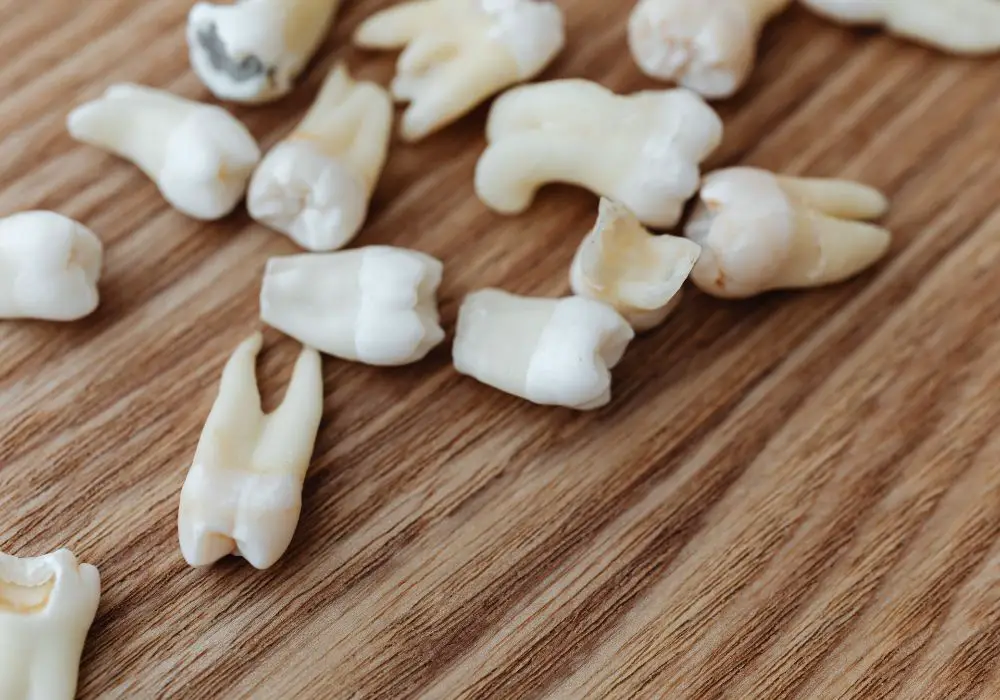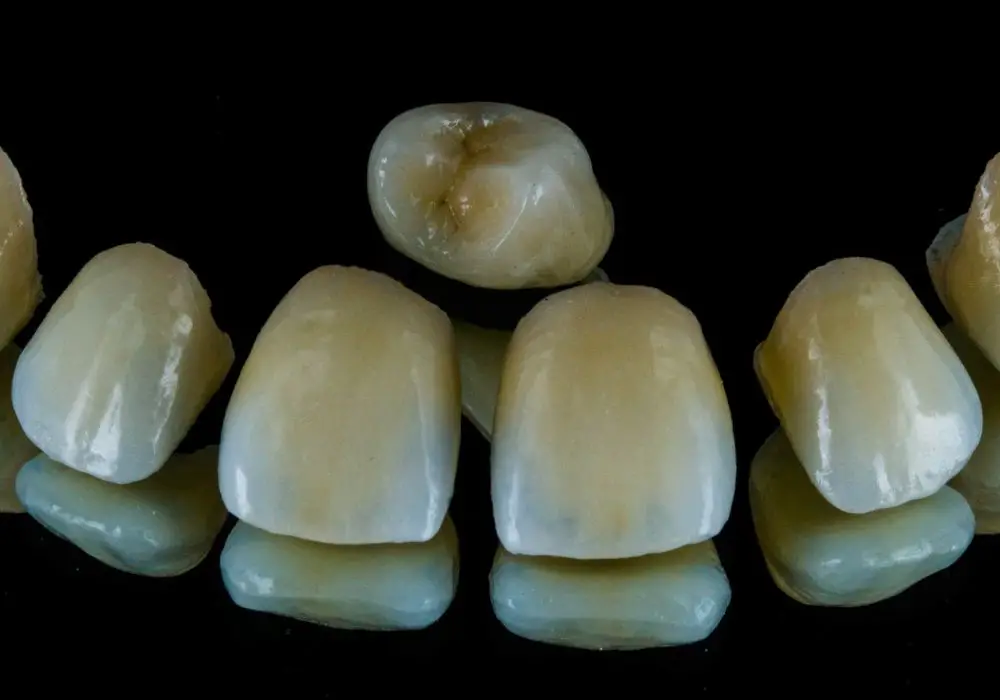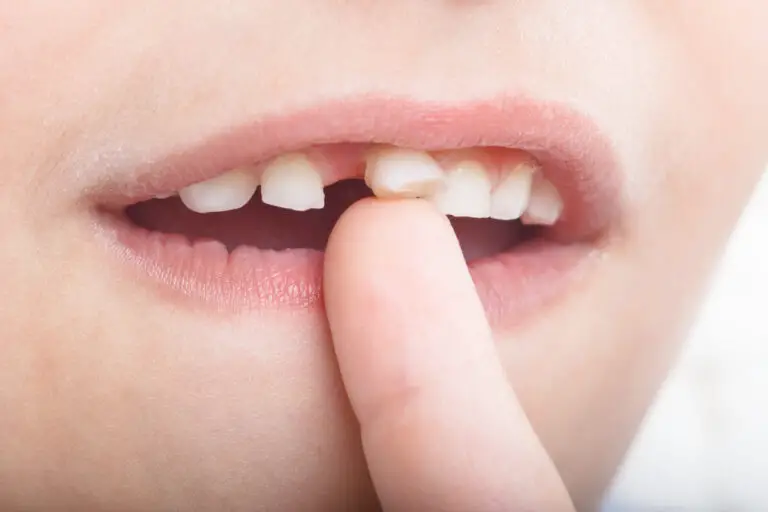Have you ever wondered if teeth are made of stone? It’s a common misconception that teeth are made of rocks, but the truth is that teeth are made up of a combination of hard and soft tissues. The hard tissues include enamel, dentin, and cementum, while the soft tissue is the pulp.
Enamel, the outermost layer of the tooth, is the hardest substance in the human body and is mostly made up of calcium phosphate. It is responsible for protecting the tooth from decay and damage. Dentin, the layer underneath the enamel, is also a hard tissue and provides support to the tooth structure. Cementum, the layer that covers the tooth root, is a bone-like substance that attaches the tooth to the jawbone.
While teeth are not made of stone, they do contain minerals that are commonly found in rocks, such as hydroxyapatite. This mineral gives teeth their hardness and durability. However, unlike rocks, teeth are living tissues that can be affected by various factors such as diet, hygiene, and genetics. Understanding the composition of teeth can help you take better care of them and maintain good oral health.
Understanding Teeth

Composition of Teeth
Teeth are complex structures made up of different layers of tissue. The outermost layer of the tooth is called enamel, which is the hardest and most mineralized substance in the human body. Enamel is mostly made up of hydroxyapatite, a type of mineral that gives teeth their strength and durability.
Underneath the enamel is the dentin, a layer that contains microscopic tubes. Dentin is a hard tissue that is less dense than enamel and is responsible for giving teeth their color. When the enamel is damaged, heat or cold can enter the tooth through these paths and cause sensitivity.
The innermost layer of the tooth is called the pulp, which contains nerves, blood vessels, and connective tissue. The pulp is responsible for keeping the tooth alive and healthy.
Function of Teeth
Teeth play a crucial role in the digestive system. They help you bite, tear, and grind food up before swallowing it. Different types of teeth are designed for different functions. For example, incisors are used for biting and cutting, while molars are used for grinding and crushing.
Teeth are also important for speech. The way your teeth come together when you speak affects the way you pronounce certain sounds.
In addition to their functional roles, teeth also play a significant role in your appearance. A healthy, white smile can boost your confidence and make you feel more attractive.
Overall, teeth are complex structures that serve important functional and aesthetic roles in the body. Understanding their composition and function can help you take better care of your teeth and maintain good oral health.
Are Teeth Made of Stone?

Teeth are an essential part of the human body, and they play a crucial role in our daily lives. Over the years, many myths and misconceptions have emerged about teeth, including the notion that teeth are made of stone. In this section, we will explore this claim and examine its validity.
Comparing Teeth and Stones
At first glance, teeth may appear to be similar to stones. Both are hard and durable, and they can withstand significant wear and tear. However, there are several key differences between the two that make it clear that teeth are not made of stone.
For one, teeth are living tissue, while stones are not. Teeth are composed of multiple layers of both hard and soft tissue, including enamel, dentin, cementum, and pulp. Enamel, the outermost layer of the tooth, is the hardest substance in the human body and helps shield teeth from cavity-causing bacteria. Dentin is a softer layer that lies beneath the enamel and provides support and structure to the tooth. Cementum covers the root of the tooth and helps anchor it to the jawbone. Finally, pulp is the soft tissue at the center of the tooth that contains nerves and blood vessels.
In contrast, stones are non-living minerals that are formed through geological processes. They do not have the complex structure or composition of teeth, and they do not have the ability to grow, repair, or regenerate.
Myths and Misconceptions
Despite the clear differences between teeth and stones, the idea that teeth are made of stone persists in some circles. This may be due to a misunderstanding of the minerals that are found in teeth, such as calcium and hydroxyapatite. While these minerals are also present in some types of stone, they do not make up the entirety of the stone’s composition, and they are not arranged in the same way as they are in teeth.
Another possible reason for this misconception is the fact that tartar, a hardened form of dental plaque, is sometimes referred to as calculus. This term may be confused with the mathematical concept of calculus, which is derived from the Latin word for “pebble” or “stone.” However, the two concepts are unrelated, and tartar is not the same as stone.
In conclusion, while teeth and stones may share some superficial similarities, they are fundamentally different in composition and structure. Teeth are living tissue that are essential for our health and well-being, and they deserve to be treated with care and respect.
The Science Behind Tooth Formation
Biological Process of Tooth Formation
Tooth formation, also known as odontogenesis, is a complex biological process that begins during embryonic development. It involves the interaction of different types of cells, such as epithelial cells and mesenchymal cells, that eventually give rise to the different structures of the tooth, including the enamel, dentin, pulp, and cementum.
The process of tooth formation can be divided into several stages, including the initiation stage, bud stage, cap stage, bell stage, and finally, the maturation stage. During the initiation stage, the epithelial cells of the oral cavity interact with the neural crest cells to form the dental lamina, which will give rise to the tooth buds.
As the tooth buds develop, they go through different stages, where they grow and differentiate into the different structures of the tooth. The enamel, which is the outermost layer of the tooth, is formed by the ameloblasts, while the dentin, which is the bulk of the tooth, is formed by the odontoblasts. The pulp, which contains the blood vessels and nerves of the tooth, is formed by the dental pulp cells.
Role of Minerals in Tooth Formation
Minerals, such as calcium and phosphate, play a crucial role in tooth formation. The enamel, which is the hardest substance in the body, is composed of 96% mineral content, mostly in the form of hydroxyapatite crystals.
During tooth formation, the ameloblasts secrete enamel matrix proteins, which eventually mineralize to form the enamel. The mineralization process involves the deposition of calcium and phosphate ions onto the matrix proteins, which eventually form the hydroxyapatite crystals.
Similarly, the dentin is also mineralized, but to a lesser extent than the enamel. The dentin is composed of 70% mineral content, also in the form of hydroxyapatite crystals. The odontoblasts secrete dentin matrix proteins, which mineralize to form the dentin.
In conclusion, tooth formation is a complex biological process that involves the interaction of different types of cells and the deposition of minerals, such as calcium and phosphate. Understanding the science behind tooth formation can help us appreciate the complexity of our teeth and the importance of maintaining good oral hygiene to keep them healthy.
Maintaining Healthy Teeth

Importance of Oral Hygiene
Maintaining good oral hygiene is essential for healthy teeth. Brushing your teeth twice a day with fluoride toothpaste can help remove plaque, a sticky film of bacteria that forms on teeth and causes tooth decay. Flossing daily can help remove food particles and plaque from between teeth and along the gum line.
In addition to brushing and flossing, it is important to visit the dentist regularly for check-ups and professional cleanings. A dentist can detect early signs of tooth decay and other dental problems and provide treatment before they become more serious.
Preventing Tooth Decay
Tooth decay is caused by bacteria in the mouth that produce acid when they break down sugar and carbohydrates. This acid can erode tooth enamel and cause cavities. To prevent tooth decay, it is important to limit sugary and acidic foods and drinks, such as soda and candy.
Drinking fluoridated water can also help prevent tooth decay. Fluoride is a mineral that can strengthen tooth enamel and make it more resistant to acid. Many communities add fluoride to their water supply to help prevent tooth decay.
In addition to these measures, there are other ways to maintain healthy teeth, such as:
- Using mouthwash to kill bacteria and freshen breath
- Chewing sugar-free gum to stimulate saliva production, which can help neutralize acid in the mouth
- Eating a balanced diet that includes plenty of fruits, vegetables, and calcium-rich foods
- Avoiding smoking and other tobacco products, which can stain teeth and increase the risk of gum disease
By following these tips and maintaining good oral hygiene, you can help keep your teeth healthy and strong for a lifetime.
Frequently Asked Questions
What mineral are teeth made of?
Teeth are primarily made up of a mineral called hydroxyapatite. This mineral is a form of calcium phosphate and is responsible for making teeth hard and durable.
What are teeth classified as?
Teeth are classified as hard structures in the body and are part of the skeletal system. However, unlike bones, teeth are not considered living tissue.
Are teeth stronger than bones?
Teeth are strong, but they are not stronger than bones. While teeth are made up of the same minerals found in bones, they are not as dense and do not have the same ability to repair themselves.
Why are teeth not bones?
Teeth and bones have different functions in the body. Bones provide support and protection for the body, while teeth are used for biting and chewing food. Additionally, teeth are not considered living tissue and do not have the ability to repair themselves like bones do.
What are real teeth made of?
Real teeth are made up of four different types of tissue: enamel, dentin, cementum, and pulp. Enamel is the hard outer layer that protects the tooth, while dentin is a softer layer underneath the enamel. Cementum covers the root of the tooth, and pulp contains nerves and blood vessels.
Are human teeth almost as hard as rock?
No, human teeth are not almost as hard as rock. While teeth are strong and durable, they are not made of the same materials as rocks and are not nearly as hard. Teeth can still be damaged or broken with enough force.







